Are you considering a renewable energy solution for your home but hesitant about the aesthetics of traditional solar panels? Solar roof tiles might be the answer you’re looking for. They offer an innovative and visually appealing alternative to solar panels, seamlessly integrating with your roof’s design while harnessing the sun’s power. In this blog post, we’ll explore the ins and outs of solar roof tiles, their costs, advantages and disadvantages, and the top manufacturers in the UK to help you make an informed decision about this cutting-edge technology.
Short Summary
- Solar roof tiles offer a stylish and efficient way to generate electricity from sunlight.
- The UK offers financial incentives, grants and varying costs for solar roof tile installation depending on factors such as location, size & type of system.
- Solar roof tiles provide numerous advantages in terms of aesthetics, property value & reduced environmental impact but come with drawbacks that should be considered before making a decision.
Understanding Solar Roof Tiles
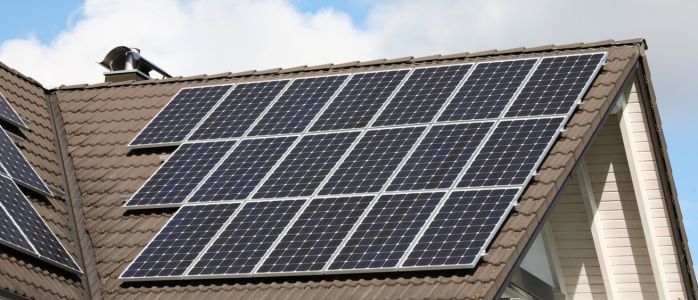
Solar or photovoltaic roof tiles are designed to generate electricity from sunlight while blending seamlessly with various roof designs. By choosing solar roof tiles over traditional solar panels, you can:
- Maintain the visual appeal of your home
- Avoid the bulky appearance of traditional solar panels
- Increase energy efficiency without compromising aesthetics
They are becoming increasingly popular in the UK, and planning permissions are generally unnecessary for their installation, except for listed buildings or conservation areas.
Solar Roof Tile Technology
Solar panel roof tiles, like standard solar panels, employ photovoltaic cells to transform sunlight into electricity. Solar roof tiles have two main types: Classic Monocrystalline Solar Cell Tiles and Thin-Film PV Cell Tiles. Both varieties have unique characteristics that make them the ideal choice for specific applications. Marley SolarTile, for example, has a power output of 335 W and an efficiency of 20.7%.
The lifespan of Classic Monocrystalline Solar Cell Tiles is approximately 25-30 years, while Thin-Film PV Cell Tiles have a lifespan of 10-20 years.
Integration with Roof Structures
A key advantage of solar roof tiles is their ability to integrate seamlessly with various roof types and materials, offering an aesthetically pleasing and efficient option for renewable energy generation. Solar shingles come in many different styles, including:
- Textured
- Smooth
- Slate
- Tuscan
Manufacturers may offer these types, among other options. For instance, Marley SolarTile is a solar panel seamlessly integrated with the roof and flush with the tiles.
Solarcentury, on the other hand, ceased production of their solar roof tiles and shifted their focus to the integrated solar panel market.
Costs of Solar Roof Tiles in the UK
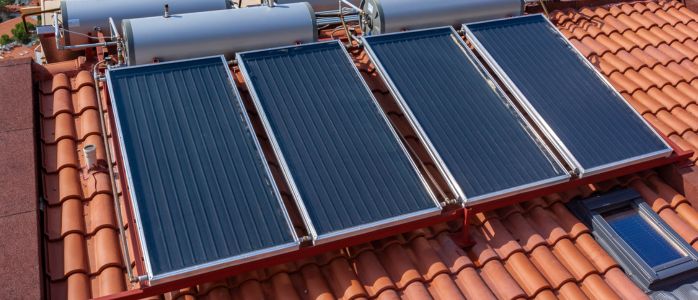
The cost of solar roof tiles in the UK varies depending on location, roof size, and tile type. While solar roof tiles tend to be more expensive than solar panels, they offer a more attractive choice and can provide long-term savings on electricity bills.
To give you an idea of the costs, we have provided a table with estimated solar roof tile costs in the UK based on data from the last quarter of 2021, including typical solar panel prices.
Factors Affecting Pricing
Several factors influence the pricing of solar roof tiles in the UK, such as:
- The number of tiles installed
- The initial cost of acquisition
- The efficiency of the tiles
- The size of the system
- The brand
- The complexity of the installation process.
The installation amount of solar tiles depends on the size of the roof and the output desired from the system. The initial cost of solar roof tiles depends on the type of tiles, the size of the system, and the brand.
Solar roof tiles, utilizing solar power, are generally more efficient than solar panels, capturing a greater amount of the sun’s energy.
Financial Incentives and Grants
Financial incentives and grants, such as the Smart Export Guarantee (SEG), can help reduce the overall solar roof tile installation cost. The SEG is a government-backed scheme that enables small-scale renewable electricity generators to receive payment for any energy they export to the national grid. Homeowners can experience annual savings of up to £610 with the SEG, depending on their daily routines.
In the UK, other financial incentives and grants are available for solar roof tiles, such as zero VAT and the ECO4 government grant. Further information and application procedures can be found on websites such as GreenMatch, FMB, and Solar Guide.
Advantages and Disadvantages of Solar Roof Tiles
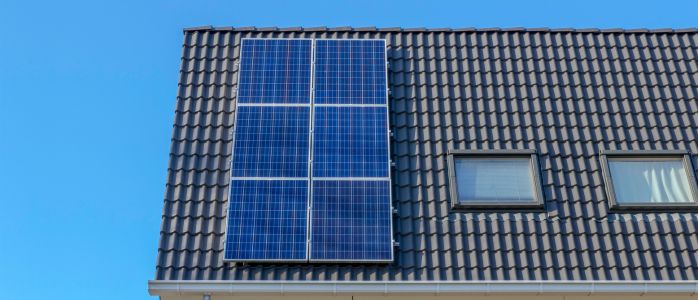
As with any renewable energy solution, solar roof tiles have their own advantages and disadvantages. Understanding these pros and cons can help you decide whether solar roof tiles are the right choice for your home.
The advantages of solar roof tiles include lower energy bills, increased home value, and a higher home value.
Benefits of Solar Roof Tiles
Solar roof tiles offer several benefits to homeowners, including:
- Improved aesthetics
- Increased property value
- Reduced electricity bills
- A smaller carbon footprint
Solar roof tiles integrate seamlessly with a home’s design, preserving the roof’s visual appeal.
Thin-film solar cells, in particular, are cost-effective, require fewer resources, produce less waste, and are more flexible and lightweight than Classic Monocrystalline Solar Cell Tiles.
Drawbacks of Solar Roof Tiles
Despite their advantages, solar roof tiles also have some downsides. They typically have a higher initial cost compared to traditional solar panels. Solar roof tiles are also approximately 25% less efficient than solar panels.
Additionally, solar roof tiles may not be suitable for all roof types, such as flat roofs or roofs with a steep pitch.
Comparing Solar Roof Tiles and Solar Panels
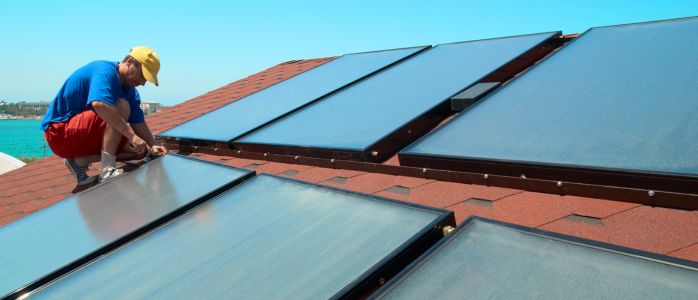
When considering solar energy for your home, it’s essential to compare solar roof tiles and solar panels to determine which option best suits your needs. In terms of design, solar roof tiles are more visually appealing than solar panels, as they blend seamlessly with various roof types and materials. However, solar panels are approximately half the cost of solar tiles.
Regarding energy efficiency, thin-film PV cells have a superior temperature coefficient, increasing their resistance to high temperatures. It is expected that thin-film PV cells will become increasingly efficient. This is due to their higher theoretical efficiency compared to monocrystalline silicon cells.
Choosing between solar roof tiles and solar panels will ultimately depend on your budget, roof type, and long-term energy goals.
Top Solar Roof Tile Manufacturers in the UK
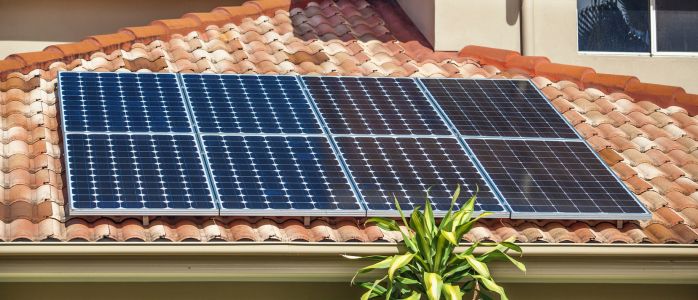
Three top solar roof tile manufacturers in the UK are:
- GB Sol – provides PV Slate, a solar panel roof tile designed to blend in with slate roofs, making it popular with UK Local Authorities.
- Tesla – offers solar roof tiles that mimic the appearance of traditional roofing materials, such as slate or terracotta.
- Solecco specializes in solar roof tiles made from recycled materials, offering homeowners a sustainable and eco-friendly option.
Tesla’s Solarglass. Roof, also known as Tesla’s solar roof tiles, combines traditional roof tile aesthetics with solar energy generation, but availability in the UK is currently limited. Solecco offers solar tiles in various colours, suitable for different roof types and architectural styles.
GB Sol
GB Sol, a UK-based manufacturer, offers PV Slate, a solar panel roof tile designed to blend in with slate roofs. PVV. Slate particularly appeals to homeowners seeking planning permission, as it integrates seamlessly with existing slate roofs. The power generation capacity of GB Sol’s solar tile ranges from 25Wp to 35Wp, with a weight range of 3.0-3.9kg.
The cost of a 4 kW solar roof tile system from GB Sol is £8,449, which is the solar roof tiles cost you should consider, and they offer a 10-year guarantee on their product, making the solar roof tiles worth the investment.
Tesla Solar Roof Tiles
Tesla’s Solarglass offers a comprehensive roofing system with integrated solar panels, available in the following styles:
- Textured
- Smooth
- Tuscan
- Slate
Priced at £18 per square foot, Tesla’s Solarglass Roof aims to combine the aesthetics of traditional roof tiles with solar energy generation.
Availability in the UK is currently limited, but international deliveries are expected in 2024. Tesla’s solar tiles come with an infinite warranty, ensuring long-term peace of mind for homeowners.
Solecco
Solecco Solar, a Leeds-based company, specializes in manufacturing and selling solar tiles in various colours to suit different roof types and architectural styles. They offer terracotta and black solar roof tiles constructed with recycled plastic. The efficiency of Solecco solar tiles is 17.39%, and they have an anticipated energy generation lifespan of 30 years.
The cost of a 4 kW system from Solecco Solar is £12,000, and they also offer non-solar tiles to accommodate customers who do not require solar tiles for their entire roof.
Determining If Solar Roof Tiles Are Right for You

To determine if solar roof tiles are the right choice for your home, consider your budget, roof type, and long-term energy goals. Obtaining personalized quotes from experienced installers is recommended for accurate cost estimates. Websites such as Solar Guide can help streamline the process of acquiring customized quotations from professional installers, with quotes typically received within 48 hours.
Remember that you are not obligated to accept any of the quotes you receive.
Installation Process and Choosing an Installer
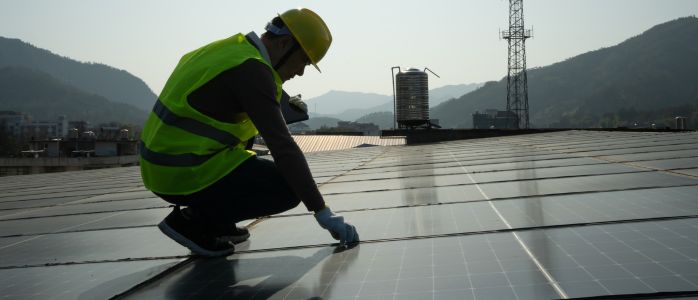
The process of installing solar roof tiles involves the following steps:
- Removing existing tiles
- Laying solar tiles
- Connecting electrical cables
- Installing an inverter to convert DC power into AC electricity
- Adding a solar battery storage system to optimize energy usage
Choosing a qualified and reputable installer is crucial for a successful installation. Ensure the installer has the appropriate insurance to fit and install the roof tiles and verify the warranty period associated with the tiles if any issues arise within a certain period after installation.
When searching for a solar roof tile installer, it is essential to:
- Review their experience, including photos and videos of their previous work
- Seek out recommendations from past clients to get insight into the quality of their services
- Use websites such as HouseholdQuotes to find a list of solar tile companies in your area and help you find the right installer for your needs.
Maintenance and Lifespan of Solar Roof Tiles
Solar roof tiles can last up to 25-30 years with little maintenance. They are relatively easy to maintain in the long term. To ensure optimal efficiency, it is recommended to clean solar roof tiles at least annually and remove debris or dirt buildup as needed.
Regular inspection of your existing roof for cracked or broken tiles can help prolong the life and performance of your solar roof tiles.
Summary
In conclusion, solar roof tiles offer an innovative and aesthetically pleasing alternative to traditional solar panels, allowing homeowners to harness the sun’s power while maintaining the visual appeal of their roofs. With various solar roof tile options available in the UK, it’s essential to consider factors such as budget, roof type, and long-term energy goals to determine if solar roof tiles are the right choice for your home. By researching manufacturers, obtaining personalized quotes, and selecting a qualified installer, you can make an informed decision about this cutting-edge renewable energy solution and potentially reap the benefits of reduced electricity bills and a smaller carbon footprint for years.
Frequently Asked Questions
Are solar roof tiles worth it?
Solar roof tiles offer an aesthetic and practical solution for homeowners who are replacing their roofs or are concerned about the appearance of their property. It is an excellent choice for those seeking solar energy with minimal disruption.
Are solar panels cheaper than roof tiles?
Overall, solar panels are generally cheaper than solar tiles, although the investment in energy savings may take longer to realise.
What are the disadvantages of solar tiles?
Solar tiles can be costly and require experienced installers, making them a less viable option for the average homeowner. They also have shorter life spans than traditional asphalt shingles, meaning you may need to replace them more frequently.
Additionally, they are unavailable in all areas, making them difficult to find in some locations.
What is the difference between solar roof tiles and solar panels?
Solar roof tiles offer a discreet, aesthetically pleasing option for renewable energy generation, while solar panels are mounted on existing roof tiles.
This is an attractive option for homeowners who want to generate renewable energy but don’t want to compromise on the look of their home. Solar roof tiles blend in with existing roof tiles, making them virtually indistinguishable from existing ones.
How long do solar roof tiles last?
Solar roof tiles are designed to last up to 25-30 years, providing lasting value and reliable energy generation.
